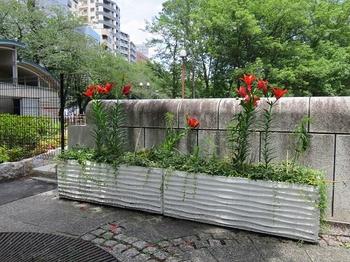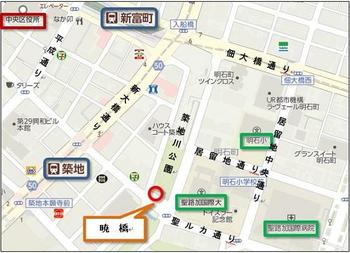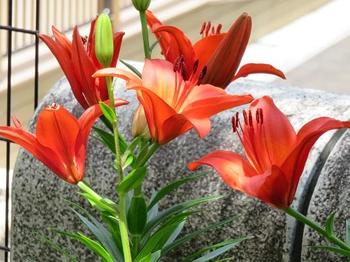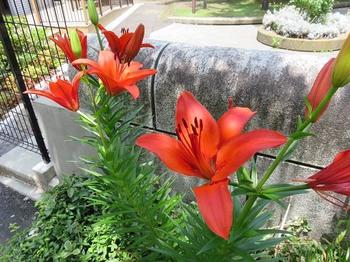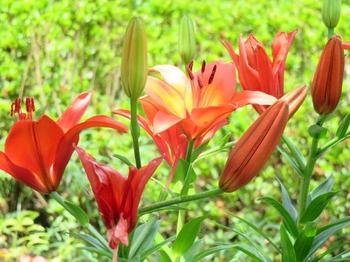List of Authors
>>About this blog
Recent blog post
|
[Dimini ☆ Cricket]
June 17, 2018 18:00
At the special gallery space of the Chuo Ward Local Tenmonkan (Time Dome Akashi), located on the 6th floor of a complex such as the Chuo-ku Public Health Center facing St. Luke Street, 12-1 Akashicho, a special exhibition "Rediscovered Bunjin Exhibition related to  Chuo-ku" is being held. Chuo-ku" is being held.
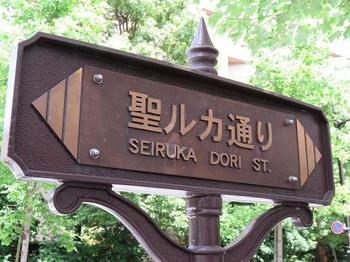
The event will be held from Saturday, May 26 to July 1 (Sun).
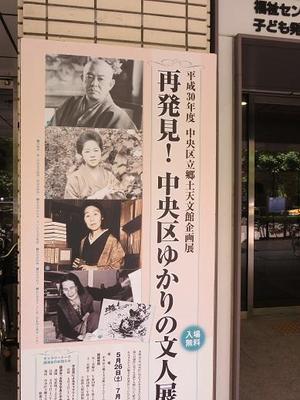
Open from 10 am to 7 pm Tuesday to Friday.
Saturday and Sunday are from ten a.m. to five p.m.
Admission is until 30 minutes before closing.
Monday is closed.
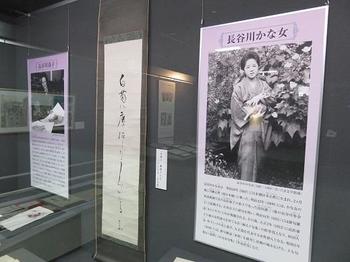
The literary artists featured are Junichirou Tanizaki, Shigure Hasegawa, Kanajo Hasegawa, Takeko Kujo, and Haruko Hasegawa, a publishing company located in Nihonbashikakigaracho, and a corner of Rokuko Publishing.
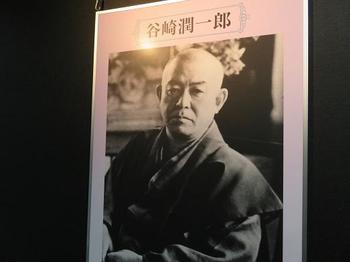
Junichirou Tanizaki was born at 2-chome Kakigaracho, Nihonbashi-ku (currently 1-chome, Nihonbashi Ningyocho, Chuo-ku). was born at 2-chome Kakigaracho, Nihonbashi-ku (currently 1-chome, Nihonbashi Ningyocho, Chuo-ku).
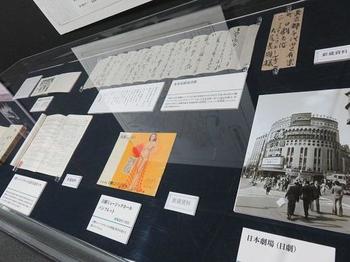
He is one of the most famous novelists in modern Japanese literature.
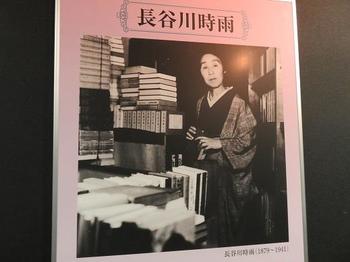
Shigure Hasegawa  was born at 1-chome, Toyucho, Nihonbashi-ku (currently 3-chome, Nihonbashi-Daidenmacho, Chuo-ku). was born at 1-chome, Toyucho, Nihonbashi-ku (currently 3-chome, Nihonbashi-Daidenmacho, Chuo-ku).
Playwright and novelist
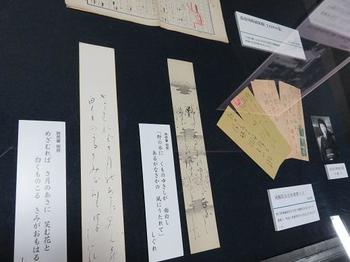
We published magazines and newspapers to improve the status of women.
His memoir "Old Mon Nihonbashi" is famous. 
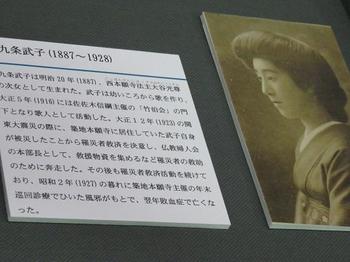
Takeko Kujo  is an educator and poet. is an educator and poet.
They helped rebuild Tsukiji Honganji Temple, which was completely destroyed by the Great Kanto Earthquake, and helped rescue injured person orphans in the wake of the earthquake. 
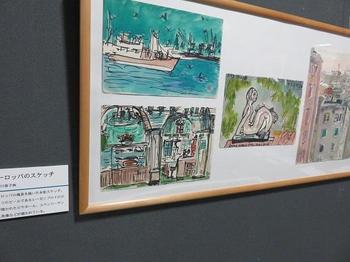
Haruko Hasegawa  is the younger sister of Shigure Hasegawa and a Western painter. is the younger sister of Shigure Hasegawa and a Western painter.
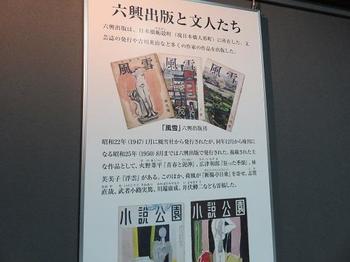
In the corner of Rokuko Publishing, handwritten manuscripts such as Fumiko Hayashi, Minoru Mushakoji, and Saisei Muro, who wrote in the company's magazine, were displayed. of Rokuko Publishing, handwritten manuscripts such as Fumiko Hayashi, Minoru Mushakoji, and Saisei Muro, who wrote in the company's magazine, were displayed.
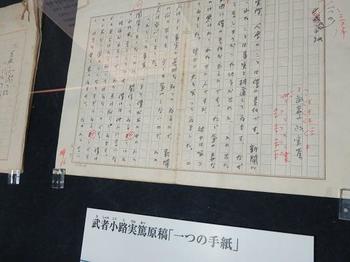
  The handwritten manuscript was real, such as the traces of the writer's elaborate work, and it was interesting to understand that it was such an expression at first. The handwritten manuscript was real, such as the traces of the writer's elaborate work, and it was interesting to understand that it was such an expression at first.
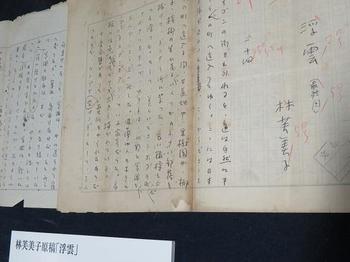
In addition, we received special consent from the venue where photography is prohibited.
Thank you very much
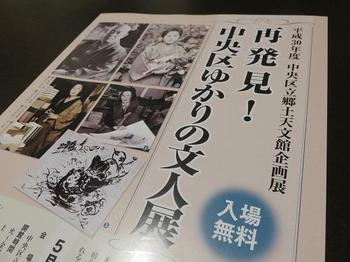
     
[Dimini ☆ Cricket]
June 16, 2018 09:00
At the gallery "Megumi Ogita Gallery" on the first basement floor of the Ginza Otsuka Building, Ginza 2-chome, an exhibition by Yae Asano is currently being held.
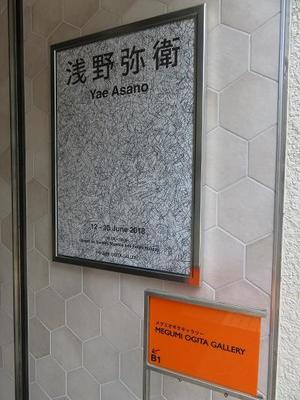
The event period is from Tuesday, June 12 to June 30 (Saturday).
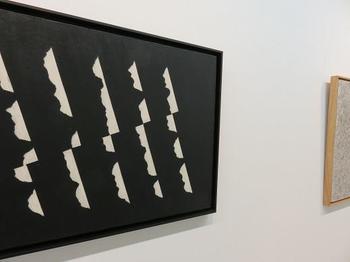
Opening hours are from 11:00 to 19:00.
Days, moons and public holidays are closed.
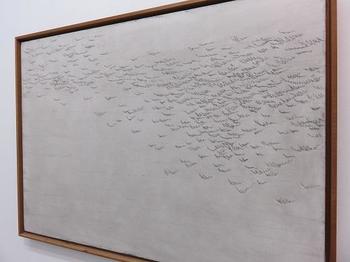
It seems that this is the first time that his exhibition has been held at this gallery.
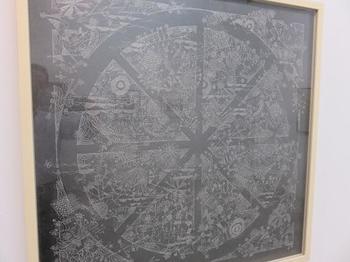
Mr. Yae Asano (October 1, 1914-February 22, 1996) is said to be from Suzuka City, Mie Prefecture.
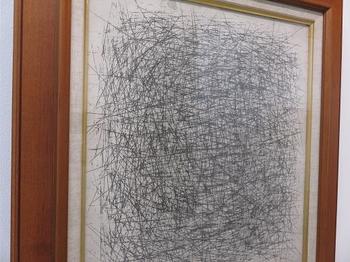
He said that he was evaluated by the technique of "scratching", but it was not just scratching, but it was elaborate to paint oil paint on the "scratching" screen once and then wipe it off. It seems that it was elaborate, and it was said that he had established a unique style through his own research.
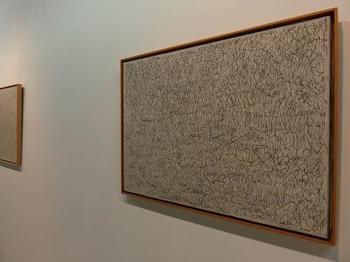
Mr. Asano says, "We continued to aim to establish abstracts born from Japanese cultural climates that can only be done by Japanese," and the exhibited works also depict "Japanese cultural climates that can only be done by Japanese". When I think that it is, I feel that various Japanese things can be seen from line drawing works.
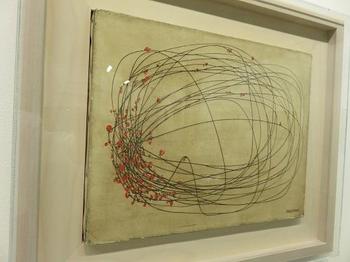
The works exhibited at the venue include abstract works of "scratching" and works of early concrete "like", and in a quiet gallery on the first basement floor, only works suitable for viewing while using imagination . of early concrete "like", and in a quiet gallery on the first basement floor, only works suitable for viewing while using imagination .
It is a time when the weather is not stable  during the rainy season, but please drop in by all means. during the rainy season, but please drop in by all means.
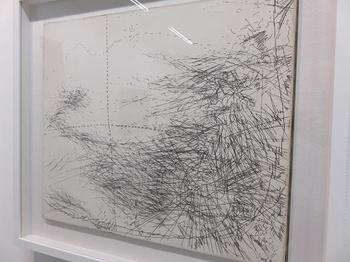
Regarding photography in the gallery, we received your consent and gave a friendly and polite explanation of the works and artists, each time. in the gallery, we received your consent and gave a friendly and polite explanation of the works and artists, each time.
Thank you very much
Click here for the website of Megumi Ogita Gallery. ⇒
http://www.megumiogita.com/
        
[Dimini ☆ Cricket]
June 14, 2018 12:00
[Dimini ☆ Cricket]
June 7, 2018 09:00
I realized that a photo exhibition starting today (June 5) is being held in the gallery on the second floor of the same building as "Shin Miura Garden", which often visits starting today (June 5) is being held in the gallery on the second floor of the same building as "Shin Miura Garden", which often visits  for lunch, is very close to the company. for lunch, is very close to the company.
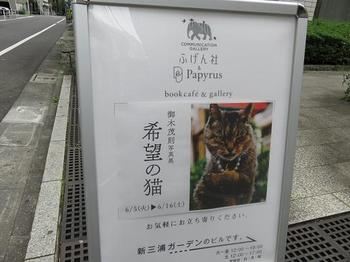
This is the "Ne of Hope Shigenori Miki Photo Exhibition" held at "Communication Gallery Fugensha" on the second floor of Tsukiji Garden Building, 1-8-4, Tsukiji Garden Building.
It's the place in red on the map below. below.
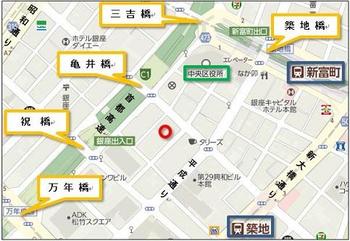
Fugen is a store that combines a bookstore , a gallery, and a cafe , a gallery, and a cafe . .
Exhibitions and events are held from time to time.
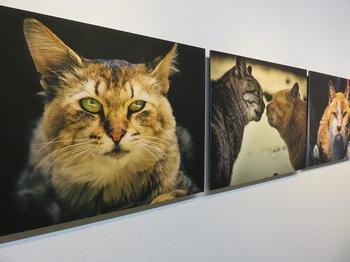
The photo exhibition will be held from Tuesday, June 5 to June 16 (Saturday). will be held from Tuesday, June 5 to June 16 (Saturday).
The time is from 12:00 to 19:00 from Tuesday to Friday.
Saturday is from 12 to 17 o'clock.
We're closed on Sunday and Monday.
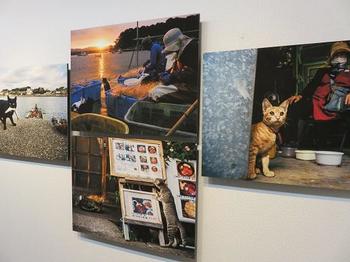
We were able to talk to Mr. Shigenori Miki, who came to the venue.
It seems that this is the first photo exhibition for Miki. for Miki.
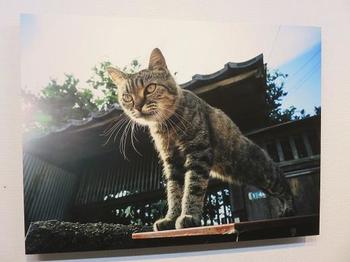
Miki was originally  a film photographer, and while filming activities, he visited and photographed cats a film photographer, and while filming activities, he visited and photographed cats he met in various parts of Japan and abroad. he met in various parts of Japan and abroad.
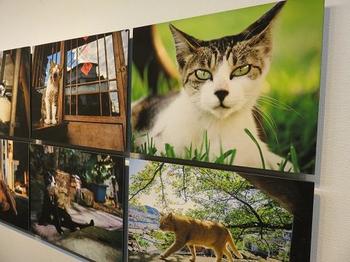
The first impression of seeing the work at the venue was
First of all, the color is beautiful
A work that cuts out a space that is well colored and feels light makes you feel as if you were there.
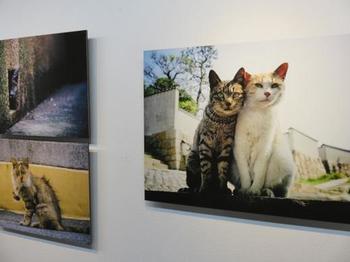
And it's a low angle, sometimes super-up, and  the expressions of the cats taken are very natural and relaxed. the expressions of the cats taken are very natural and relaxed.
They were told that they were alive in the place they were photographed.
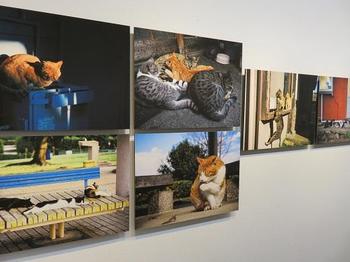
Also, some of the works made me feel the strength of surviving, and I felt that it was connected to real and humorous warmth. the works made me feel the strength of surviving, and I felt that it was connected to real and humorous warmth.
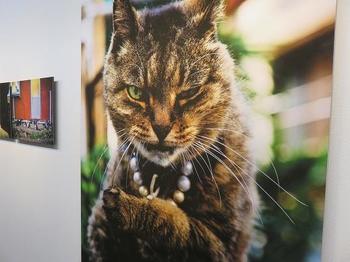
Please come and visit us  to meet the "cat of hope" and a healthy cat. to meet the "cat of hope" and a healthy cat. 
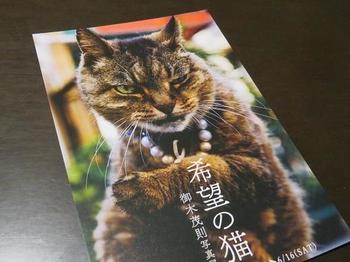
In addition, we received your consent  for photography in the gallery, and the work was directly explained by the person himself. for photography in the gallery, and the work was directly explained by the person himself.
Thank you very much
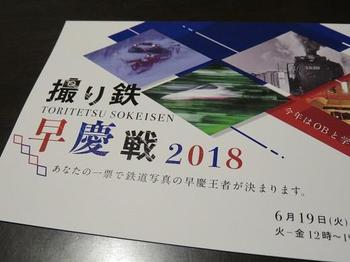
By the way, from June 19 (Tuesday), Fugensha will hold the “Taketetsu Saikei Battle 2018” in railway photography, which will determine the winner based on the number of votes of visitors. “Taketetsu Saikei Battle 2018” in railway photography, which will determine the winner based on the number of votes of visitors.
This is also very interesting.

Click here for Fugen's website. ⇒
http://fugensha.jp/
        
[Dimini ☆ Cricket]
June 4, 2018 14:00
This is a continuation of "Walking the Ruins of Kaedegawa (1)"
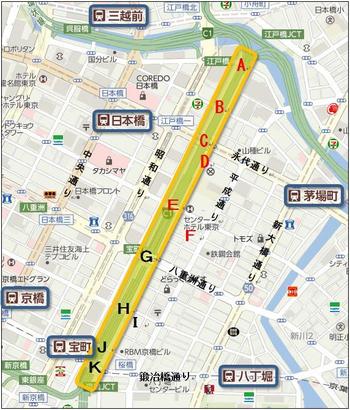
The Kaede River existed in Chuo-ku until the 1930s, diverted from the vicinity of Kabuto-cho on the Nihonbashi River to the south and reached the confluence of the Kyobashi River and Hatchobori (Sakuragawa). The Toshin Beltway, the Metropolitan Expressway, passes through the trace.  
It is  the yellow part of the map above. the yellow part of the map above.
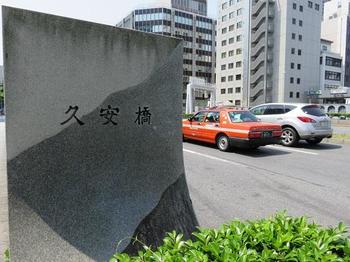
(G) It's Kuyasu Bridge.
This bridge is a bridge where Yaesu Street crosses the Metropolitan Expressway (formerly Kaedegawa).
The current bridge was rebuilt along with the construction of Yaesu Street by the reconstruction project of the Great Kanto Earthquake, and is a heavy arch bridge.
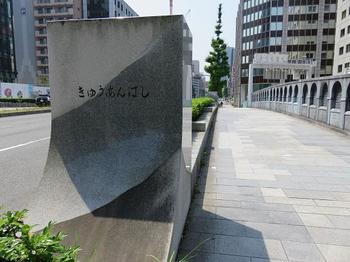
Kuyasu Bridge was built in front of the Kamiyashiki of Matsudaira-Etsunaka Mamoru in the Edo period and was called "Ecchu Bridge", but in 1868 the name "Ecchu", a remnant of Edo shogunate, was named "Kuyasu Bridge". 
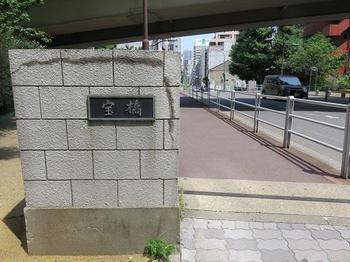
It's Takarabashi (H).
Takarabashi is a one-way narrow street connecting Kyobashi and Hatchobori, which crosses the Metropolitan Expressway (formerly Kaedegawa).
 The photo below shows the expressway south of Hohashigami. The photo below shows the expressway south of Hohashigami.  
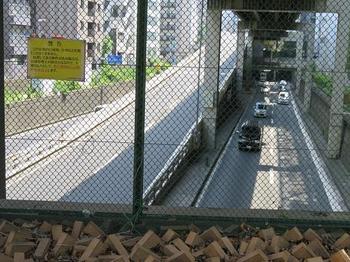
It seems that the name of Takarabashi comes from the town name "Takaramachi, Kyobashi-ku" on the Kaede Kawanishi side at that time.
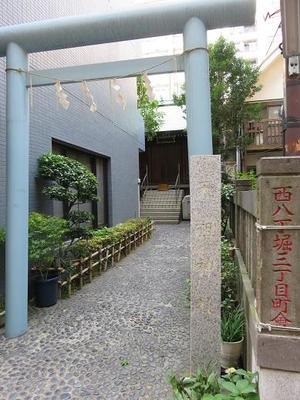
(I) At Tenso Shrine, a light blue torii gate , main hall is located right next to Takarabashi, along the narrow approach beside the building. , main hall is located right next to Takarabashi, along the narrow approach beside the building.
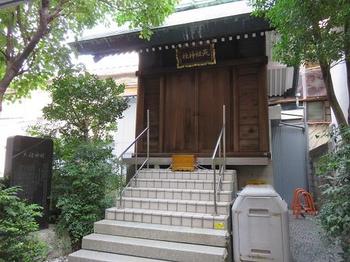
Although it is a small shrine, it has a history, and it begins in 1624 in the early Edo period when Ise Secretary-General Norimasa Ichinomasa served Izamiya, a separate shrine of Kotaijingu Shrine at Ise-jingu Shrine, at Edo Nihonbashi-dori 3-chome. It seems to be
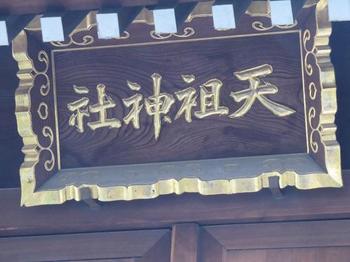
In 1633, it was said that Hatchobori Matsuyamachi was relocated by the order of the Shogunate with a replacement area of 300 tsubo and a gate area. 
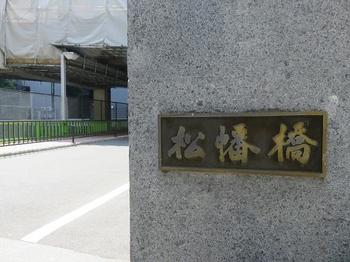
It's Matsuhatabashi (J).
It seems that it was named after taking one character of each town name from Matsuyamachi on the east side and Inabacho on the west side.
It was also called Matsuya Bridge in the Edo period.
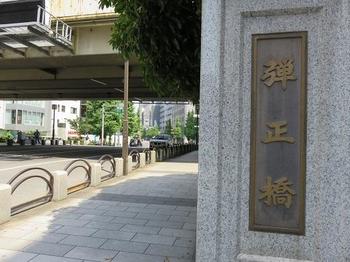
The bridge that spans the southernmost tip of Kaede River is Dansho Bridge (K)  and Kaji Bridge Street. and Kaji Bridge Street.
Again, the current bridge was rebuilt by the Imperial Capital Reconstruction Project after the Great Kanto Earthquake.
In the early Edo period, there was a mansion of Tadatoshi Shimada Danjo on the east side, and it was called "Mitsuhashi" along with the Shiraoi Bridge on the Kyobashi River and the Shinpukuji Temple Bridge on the Sanjuma Horikawa.
In 1878, Japan's first () purely domestic iron bridge was built. purely domestic iron bridge was built.
This iron bridge was relocated to Koto-ku in 1929 and was renamed Hachiman Bridge. 
 The photo below shows the highway on the south side from Dansho Bridge. The photo below shows the highway on the south side from Dansho Bridge.  
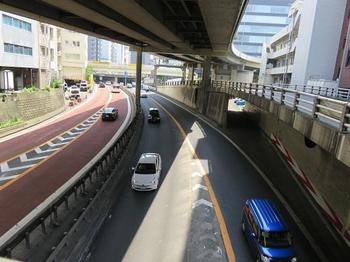
This time, when I walked along the Kaede River , it was a little short distance, but I was able to feel the weight of the history accumulated by "river and digging". , it was a little short distance, but I was able to feel the weight of the history accumulated by "river and digging".
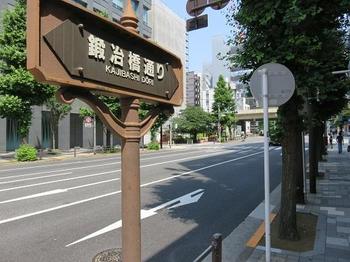
[Walking along the ruins of Kaedegawa] Complete
     
[Dimini ☆ Cricket]
June 2, 2018 09:00
The other day (May 27), I read the "Edo Tokyo History Walk Following the "River and Digging" 20 Remains "" (written by Tetsushi Okamoto, PHP Shinsho) I was interested in Kaedegawa that once existed I walked along the former Kaedegawa river.
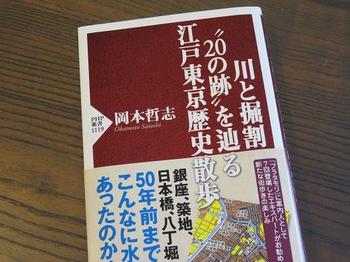
The Kaede River diverted from the vicinity of Kabuto-cho on the Nihonbashi River (currently near the Edobashi Junction) to the south, and was about 1.2 km from the confluence of the Kyobashi River and Hatchobori (Sakuragawa) (currently near the Kyobashi Junction). The Toshin Expressway was reclaimed from 1960 (Showa 35) to 1965 (Showa Expressway.  
The yellow part in the map below is where Kaedegawa used to flow. below is where Kaedegawa used to flow.
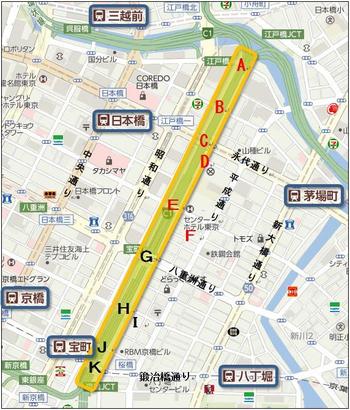
The starting point (A) was where Kabutobashi used to be.
 The photo below shows a view of the place where Kabutobashi would have been built in front of Kabuto Shrine. The photo below shows a view of the place where Kabutobashi would have been built in front of Kabuto Shrine.

It's Kabuto Shrine.
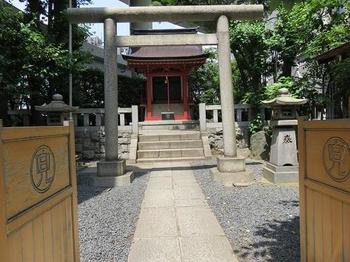
In the precincts, there is Kabutoiwa, which is said to have been reported to have stopped by Yoshiie Minamotono and prayed for victory in the role of the previous nine years.
This was the origin of the name of Kabuto-cho.
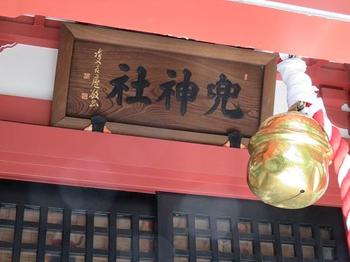
(B) This is where the shipping bridge was built.
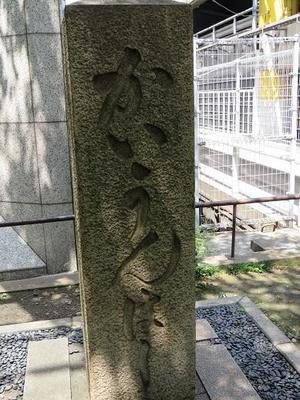
It was said that it was called Takahashi in the early Edo period, and later the Pirate Bridge and Shogen Bridge.
In the first year of the Meiji era (1868), it was renamed the Shipping Bridge over "Good luck".
Currently, only two main pillars are left.
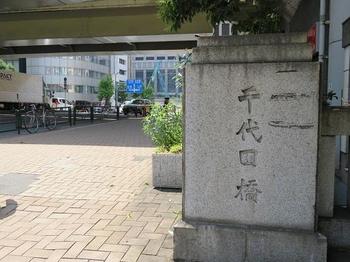
Chiyodabashi (C)  is a bridge built by Eitai-dori St. across the Kaede River. is a bridge built by Eitai-dori St. across the Kaede River.
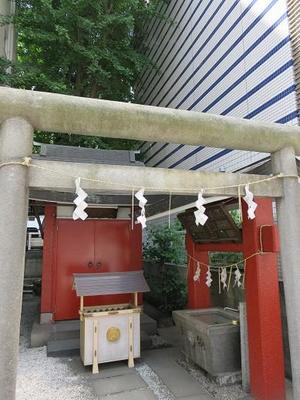
Ohara Inari Shrine (D)  is enshrined on the south side of Chiyodabashi, just a short walk away, with a highway behind it. is enshrined on the south side of Chiyodabashi, just a short walk away, with a highway behind it.
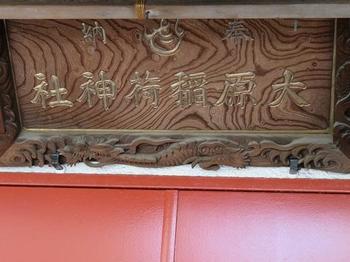
It's Shinba Bridge (E).
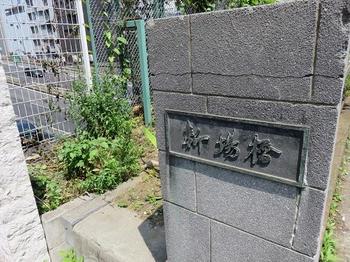
It is said that Nakanohashi and Kaedebashi were also nicknamed. In 1674, a new appetizer field (Shinkasaba shore) was set up on the west side as the second fish shore following the Nihonbashi fish shore, and it was abbreviated as Shinba It seems that it was the Nihonbashi fish shore, and it was abbreviated as Shinba It seems that it was  
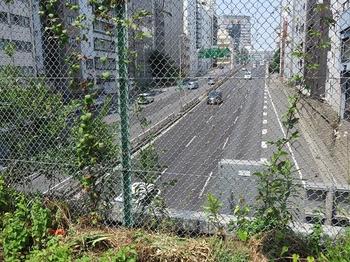
If you look at the expressway north of Hashigami of Shinbabashi, you can clearly see that the road is coming down from the elevated to the bottom of the Kaede River. the expressway north of Hashigami of Shinbabashi, you can clearly see that the road is coming down from the elevated to the bottom of the Kaede River.
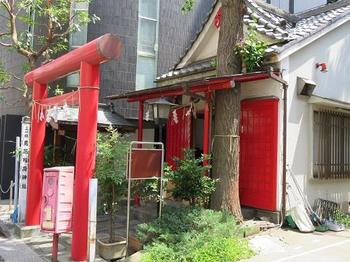
Torii Inari Shrine (F) is located just next to Shinbabashi, just a little from Sakura-dori St. is located just next to Shinbabashi, just a little from Sakura-dori St.
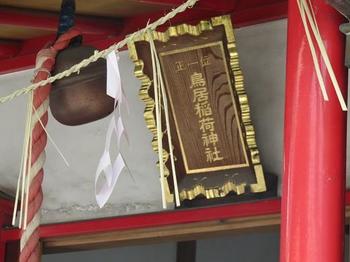
It stands in a quiet place, and the word "No. 1" is impressive.
[Continue on the site of Kaedegawa (2). ]
     
|
Links
|
![]() Chuo-ku" is being held.
Chuo-ku" is being held.![]()
![]()
![]() was born at 2-chome Kakigaracho, Nihonbashi-ku (currently 1-chome, Nihonbashi Ningyocho, Chuo-ku).
was born at 2-chome Kakigaracho, Nihonbashi-ku (currently 1-chome, Nihonbashi Ningyocho, Chuo-ku).![]()
![]()
![]() was born at 1-chome, Toyucho, Nihonbashi-ku (currently 3-chome, Nihonbashi-Daidenmacho, Chuo-ku).
was born at 1-chome, Toyucho, Nihonbashi-ku (currently 3-chome, Nihonbashi-Daidenmacho, Chuo-ku).![]()
![]()
![]()
![]()
![]() is an educator and poet.
is an educator and poet.![]()
![]()
![]()
![]() is the younger sister of Shigure Hasegawa and a Western painter.
is the younger sister of Shigure Hasegawa and a Western painter.![]()
![]() of Rokuko Publishing, handwritten manuscripts such as Fumiko Hayashi, Minoru Mushakoji, and Saisei Muro, who wrote in the company's magazine, were displayed.
of Rokuko Publishing, handwritten manuscripts such as Fumiko Hayashi, Minoru Mushakoji, and Saisei Muro, who wrote in the company's magazine, were displayed.![]()
![]()
![]() The handwritten manuscript was real, such as the traces of the writer's elaborate work, and it was interesting to understand that it was such an expression at first.
The handwritten manuscript was real, such as the traces of the writer's elaborate work, and it was interesting to understand that it was such an expression at first.![]()
![]()
![]()
![]()
![]()
![]()
![]()
![]()
![]()





















